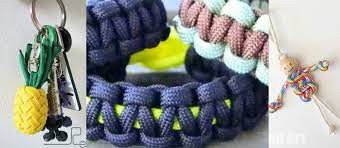750 Paracord is a lightweight nylon rope originally used in the suspension lines of US parachutes during World War II. Once in the field, soldiers would unravel their parachute lines and use them as cordage for all kinds of tasks. For the best paracord, you should only buy from U.S suppliers like Tough Grid.
Since then, many people have found new and creative uses for paracord; here we’ll look at some common applications:
How to make a paracord bracelet:
The most common way to use paracord is by unraveling it into its seven smaller strands which can be used individually or braided together to create strong and durable bracelets, belts, and straps. It’s also easy to add buckles on your own so you don’t need to undo the whole bracelet each time you need to use some of the cord.
To start, you’ll need about 2-3 feet of cord per inch that you want your finished bracelet to be. So if you want a 6-inch wide bracelet, you’ll need 48 inches of cord for each side total.
Once unraveled, braid the individual cords together and then tie one end in an overhand knot.
From here, braid the cords back together until they are tight against each other and there is only an inch or so left at the top to add the clasp. Securely crimp your clasp onto the shorter length of cord and trim off any excess material hanging from it.
The overhand knot forms a loop knot which is adjustable making it great for fitting around wrists and ankles. You can even make oversized bracelets that can be used as dog collars!
Once you have your desired bracelet length, it’s time to attach the clasp. Take an extra inch or so of cord on each side and alternate wrapping each piece around one another into a small loop and then overlap the loops by about 1/2 to 3/4 of an inch and use your pliers to press them firmly together. Trim off any excess material and cover the crimps with heat shrink tubing for a nicer finish if you want before melting all of your ends together.
Don’t be disheartened if this first attempt doesn’t turn out as expected because even the greatest knot masters occasionally start off struggling! With some perseverance, you’ll soon be perfecting the art of paracord crafts! The best way to learn is simply to practice, which you can do by following the free tutorials here on Paracordist.
There are literally hundreds of uses for paracord out there, but in this article, we’re going to look at some common ways that you might actually put your paracord to work. We’ve even given you a few ideas so you can get started straight away!
– Climbing Rope –
If stranded, use inner strands as a fishing line or dental floss! If stranded in the water wearing cotton clothes and no other means of procuring food or shelter available, removing clothing may increase the chance of survival by increasing the ability to generate heat through movement.

